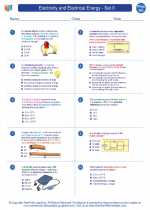Evolutionary Timeline
The evolutionary timeline is a visual representation of the history of life on Earth, depicting the changes in the diversity of species over time. It shows the evolution of life from its earliest origins to the present day.
Key Concepts
1. Geological Time Scale
The geological time scale is a system of chronological measurement that relates stratigraphy (rock layers) to time. It is used by geologists, paleontologists, and other Earth scientists to describe the timing and relationships between events that have occurred during Earth's history.
2. Origin of Life
The evolutionary timeline begins with the origin of life, which is believed to have occurred around 3.5 to 4 billion years ago. The earliest life forms were simple, single-celled organisms, such as bacteria and archaea.
3. Major Evolutionary Events
Key events in the evolutionary timeline include the development of photosynthesis, the emergence of eukaryotic cells, the colonization of land by plants and animals, the diversification of dinosaurs, and the rise of mammals.
4. Mass Extinctions
Throughout the history of life on Earth, there have been several mass extinctions, during which a significant portion of Earth's biodiversity was lost. These events have had a profound impact on the evolutionary timeline, shaping the course of evolution for millions of years.
Study Guide
1. Understand the Geological Time Scale
Study the different eons, eras, and periods in the geological time scale. Familiarize yourself with the major events and life forms associated with each period.
2. Learn about Early Life Forms
Explore the characteristics of early life forms, such as prokaryotic cells, and understand the conditions that led to the emergence of more complex organisms.
3. Investigate Major Evolutionary Events
Research the key developments in the history of life, including the evolution of plants, animals, and other organisms. Understand how these events have shaped the diversity of life on Earth.
4. Explore Mass Extinctions
Study the causes and consequences of mass extinctions, and their impact on the evolutionary timeline. Consider how these events have influenced the rise and fall of different groups of organisms.
5. Use Visual Aids
Utilize visual aids, such as timelines, diagrams, and charts, to help visualize the evolutionary timeline and reinforce your understanding of the sequence of events.
[Evolutionary Timeline] Related Worksheets and Study Guides:
.◂Physics Worksheets and Study Guides High School. Electricity and Electrical Energy - Set II

 Worksheet/Answer key
Worksheet/Answer key
 Worksheet/Answer key
Worksheet/Answer key
